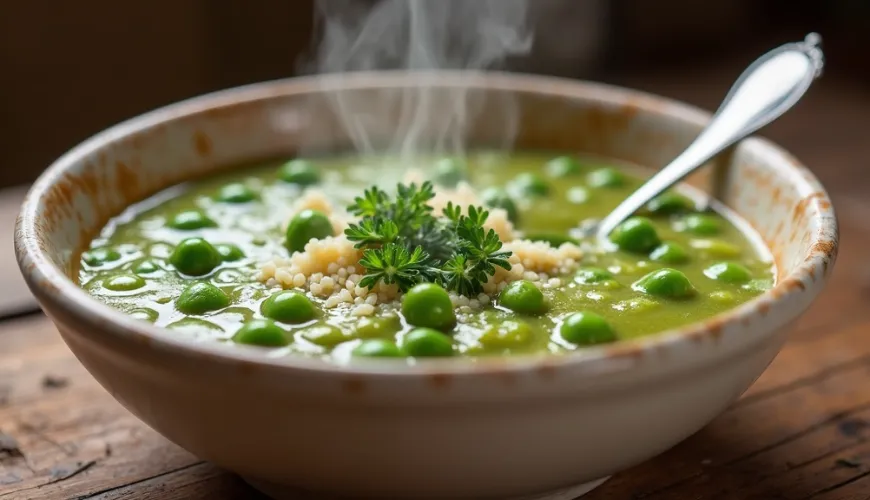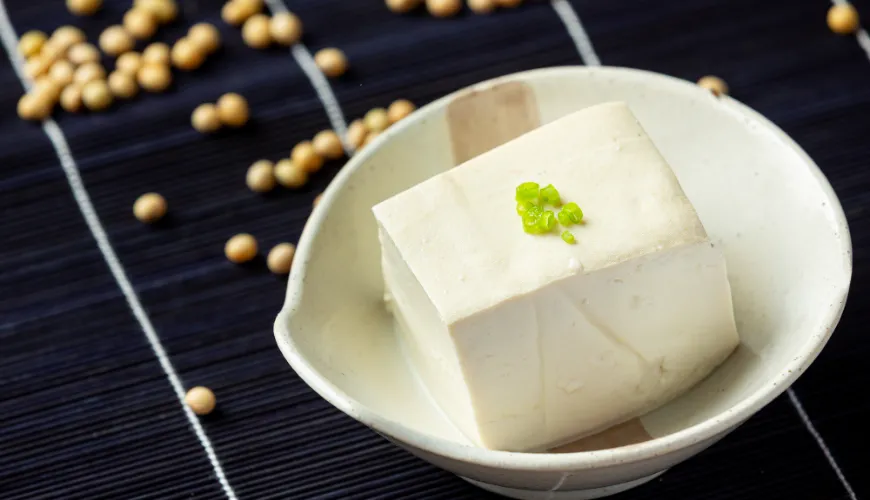
Why Try Risi Bisi and Enrich Your Diet with Health

Risi bisi – A Soup That Combines Flavor, History, and a Healthy Lifestyle
A simple name that conceals much more than it might seem at first glance. Risi bisi, a traditional Italian spring dish, is not only delicious but also nutritious, easy to prepare, and aligned with the philosophy of sustainable and healthy eating. Although it is usually served as a creamy risotto, it is increasingly appearing as risi bisi soup – a delicate, hearty dish ideal for dreary days and light summer lunches. What makes this seemingly ordinary combination of rice and peas so special?
Roots in Venice and the Taste of Spring
The history of risi-bisi goes deep into the Venetian region. The first mentions of this dish date back to the 18th century when risi bisi was served as a festive dish to celebrate the feast of Saint Mark, the patron saint of Venice. It was then served to the doge and guests as a symbol of abundance and fertility. The combination of young green peas and rice was meant to herald the arrival of spring and the beginning of a new season.
And therein lies the charm of this traditional delicacy. It is most delicious in spring when fresh peas are in full strength, sweet and tender. It is no coincidence that in Italy, risi bisi is considered something between a thick soup and a thin risotto – and it is prepared accordingly.
The essence is that the risi bisi recipe requires no complexities. On the contrary, it is based on a quality vegetable broth, round-grain rice (most commonly arborio or vialone nano), fresh peas, butter, onion, and grated Grana Padano or Parmigiano Reggiano cheese. In some areas, bacon or pancetta is added for a stronger flavor, but the traditional version is purely vegetarian.
Risi bisi Soup – Light Yet Nutritious
While classic risi bisi resembles a thin risotto, risi bisi as a soup is a newer concept that is gaining more fans. Even gentler, lighter, and ideal for those looking for a simple way to incorporate more vegetables and whole grains into their diet.
Risi bisi soup retains all the characteristic elements of the original dish – peas and rice – but adds more broth or water to create a more liquid, creamy consistency. Instead of butter, cold-pressed olive oil is often used, which is a healthier alternative and also enriches the overall flavor. This version is also ideal for vegans if cheese is omitted or replaced with a plant-based alternative.
One of the advantages of this soup is its adaptability. It can be enriched with additional seasonal vegetables – such as zucchini, green beans, or spinach – to create a colorful and nutritionally balanced dish suitable for the whole family. Adding legumes, such as chickpeas or white beans, increases the protein and fiber content, making it a perfect lunch even for more demanding days.
Why Include Risi Bisi in Your Diet?
Peas and rice form a nutritionally strong pair. Peas are rich in vitamin C, folic acid, and plant proteins, while rice provides energy in the form of complex carbohydrates. This makes risi bisi ideal as a light yet filling meal. Moreover, it is gluten-free, which will be appreciated by people with celiac disease or gluten sensitivity.
From the perspective of sustainable nutrition, it is a dish with a low ecological footprint. It uses available, local ingredients and does not require animal products – and if it does, in very small amounts. You just need to choose organic rice or fresh peas from farmers' markets, and you have a dish that is not only tasty but also gentle on the planet.
Additionally, it is a meal that costs little and fills the whole family. In households striving for a zero-waste approach, it is also advantageous that it can be a great way to use leftover rice from the previous day. If the risi bisi soup is left for the next day, its flavor deepens even more – similar to traditional Czech soups.
Try our natural products
A Kitchen Story – How Risi Bisi Delighted Even Small Eaters
A mother of two preschoolers shared that risi bisi has saved many lunches at their home. "The boys wouldn't eat vegetables, the peas usually ended up under the table. But when I made risi bisi soup and added a bit of parmesan on top, they ate the bowl to the last spoonful. They even asked for more. They called it 'green rice soup,' and since then, they want it at least once a week."
That's the magic – familiar flavors in a new guise, which can appeal even to the youngest or pickiest eaters. And you only need a few basic ingredients to cook it.
How to Prepare Risi Bisi at Home?
The foundation of a good dish is quality ingredients, and with risi bisi, this is doubly true. If you can't find fresh peas, opt for frozen – they are usually frozen shortly after harvest and retain most of their nutritional value. Ideally, choose organic peas and rice, which can be found in the offerings of sustainable e-shops like Ferwer.
Here is a simple risi bisi recipe in the form of a soup:
Ingredients:
- 1 small onion
- 2 tablespoons olive oil
- 200 g frozen or fresh peas
- 100 g round-grain rice (e.g. arborio)
- 1 liter vegetable broth
- Salt, pepper to taste
- A few leaves of fresh mint or parsley
- Optional: grated parmesan or vegan cheese
Instructions:
- Sauté finely chopped onion in olive oil until translucent.
- Add rice and briefly roast to coat it in the fat.
- Pour in half of the broth, season with salt and pepper, and cook for about 10 minutes.
- Then add the peas and the rest of the broth, topping up with water as needed.
- Cook for another 10–15 minutes until the rice softens.
- Finally, add chopped herbs and optionally cheese.
The soup can be served hot or lukewarm. In hot summer months, it tastes great cold, similar to Spanish gazpacho.
From a Small Plate to a Global Trend
Risi-bisi is far from just a local specialty of northern Italy. Thanks to its simplicity, nutritional value, and ability to adapt to various dietary preferences, it is becoming increasingly popular among people seeking a sustainable, plant-based, and tasty alternative to traditional dishes.
In a world where the impacts of animal production, food waste, and the ecological footprint of common diets are increasingly discussed, risi bisi represents a true return to simplicity. And as Italian chef and promoter of traditional cuisine Gualtiero Marchesi said: “The best dishes are born from poverty, not abundance.” Risi bisi is a shining example of this.
So why not give it a chance on the Czech plate as well?







